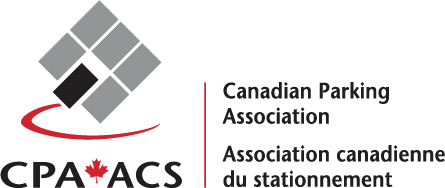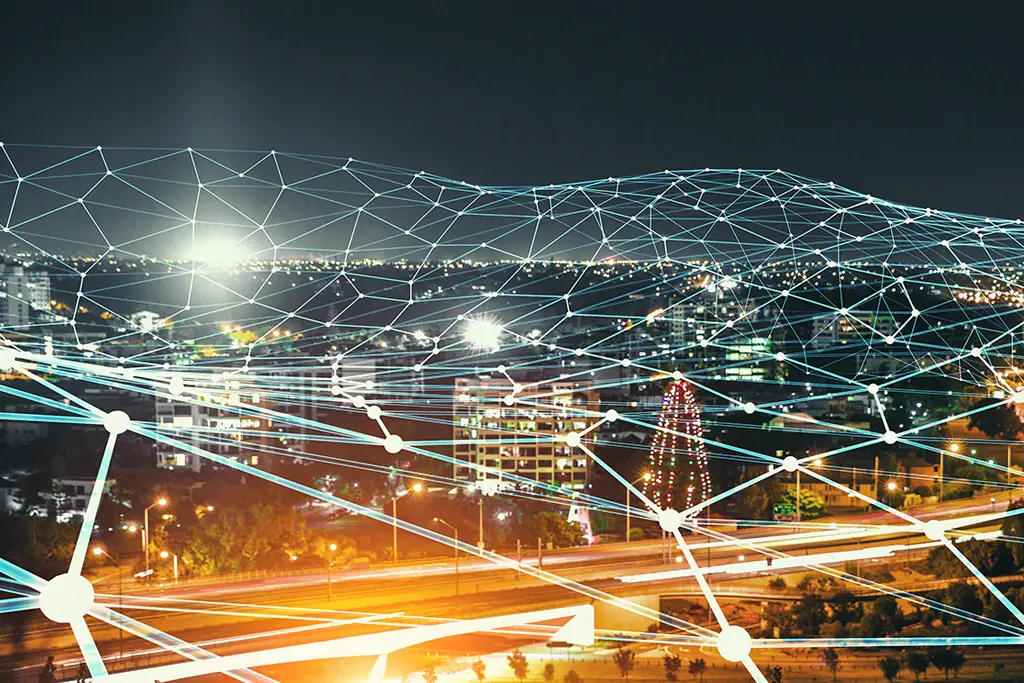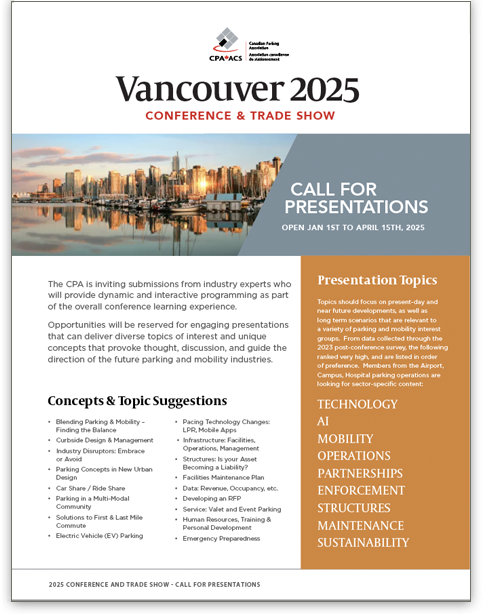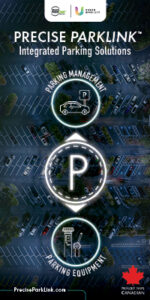Smart Cities Are In Reach
By Steve Gorski
The Canadian government strongly supports the development of smart cities as a means to enhance urban sustainability, digital innovation, and public well-being. Initiatives like the Smart Cities Challenge launched by Infrastructure Canada and the Investing in Canada Plan have led to the investment of hundreds of billions of dollars in smart city development across Canada. And these investments have been perfectly timed. The introduction of innovative parking and mobility technologies in recent years is making it possible for the longstanding smart city dreams of federal, provincial, and municipal leaders and urban planners to finally be realized.
At the core of smart city initiatives are several key objectives aimed at improving the quality of life for citizens: reduced congestion and enhanced mobility, better energy management, more resilient and adaptive infrastructure, more efficient public services, and greater citizen engagement.
The Role of Technology in Smart Cities
Technology is the key enabler of smart city development, facilitating real-time data collection, processing, and analysis to drive efficient urban system management. The most important smart city technologies include:
- Parking Guidance Systems (PGS): Directs drivers to available parking spaces, reducing congestion and emissions caused by unnecessary searching.
- Parking and Revenue Control Systems (PARCS): Automates parking management, integrating payment, access control, and occupancy tracking.
- Intelligent Traffic Systems (ITS): Utilizes real-time data and algorithms to optimize traffic flow, enhance safety, and reduce travel times.
- Parking Pre-Booking: Allows drivers to reserve parking spaces in advance, streamlining city logistics and improving the user experience.
- AI for Predictive Wayfinding: Combines AI with real-time data to guide drivers to optimal routes and parking spots, reducing delays, and enhancing urban mobility.
Hardware is just part of the equation though. To create seamless smart cities, open interfaces and interoperability are crucial. First comes open standards. Adopting open standards ensures seamless communication and data exchange between various systems and devices. Open standards make interconnected systems possible, allowing cities to integrate diverse technologies into a cohesive network, facilitating real-time data sharing and collaboration. Finally, vendor collaboration is crucial. Encouraging collaboration among technology vendors and service providers helps create interoperable solutions that fit within existing urban infrastructure, and which are not limited by the capabilities of any single technology provider.
Information is power, and the technologies that combine to form smart city networks play a vital role by monitoring traffic flow and parking utilization and then managing traffic patterns and flows to reduce congestion. For instance, smart traffic management technology uses adaptive traffic signals and real-time monitoring to adjust signal timings based on traffic conditions. Or traffic signal coordination can be modified to keep traffic moving smoothly. Or real-time traffic information systems can adjust GPS-provided directions to lead drivers to less congested roads.
Finally smart parking solutions play an essential role, as well. Sensor-based parking availability detection and mobile payment options make the parking experience much more pleasant, efficient, and safe, while at the same time enhancing parking management.
The Role of Smart Parking in Smart Cities
In fact, parking plays an outsized role in managing urban congestion and reducing emissions. Implementing smart parking solutions can reduce traffic congestion by up to 30% by minimizing the time spent searching for parking. This also leads to lower vehicle emissions when cars aren’t circling neighborhoods looking for parking or driving up and down aisles in parking lots and parkades looking for an elusive space. These smart parking tools also enhance safety since helping drivers find parking quickly and directly reduces the risk of accidents or vehicle/pedestrian collisions.
Smart parking systems also provide financial benefits. For instance, by guiding drivers to available spaces, parking guidance systems reduce the chance that drivers will give up on finding a parking space, thus minimizing the likelihood of there being unused spaces. Optimized space utilization in this way maximizes revenue. Smart parking systems also make dynamic pricing possible, and demand-based pricing, increasing revenue during peak hours.
These tools also reduce operational costs since automated systems minimize the need for manual monitoring and enforcement. Reduced costs, combined with additional revenue generation, results in a much stronger bottom line. Finally, efficient parking solutions increase a property’s attractiveness—and thus values, leading to more business for building owners and higher tax revenues for cities.
The Future of Smart Parking Technology
Actually, the future of smart parking technology is already here. AI-driven parking management is revolutionizing urban mobility. For instance, AI modules can predict parking occupancy using historical and real-time data. Cities, campuses, and even private parking owners with predictive way-finding tools can direct drivers to locations where parking is most likely to be available when they arrive.
From the perspective of parking owners and operators, AI-driven quota management tools can help operators manage parking space quotas effectively. And AI-enabled parking management tools can also provide smarter space allocation and utilization.
Moving forward, the evolution of smart cities will be driven by emerging technologies such as:
- AI-Driven Predictive Analytics: Anticipates transportation issues and optimizes infrastructure with minimal human intervention.
- 5G and Edge Computing: Enables real-time data processing for faster traffic management and decision-making.
- Digital Twin Technology: Creates virtual city replicas to test and optimize infrastructure changes before implementation.
- Net-Zero Cities and Environmental Resilience: Focuses on renewable energy, smart grids, and energy-efficient buildings.
- Mobility-as-a-Service (MaaS): Integrates parking, public transit, ridesharing, bike rentals, and autonomous vehicles into unified platforms.
- Smart Sensors: Monitors vehicle movements, pedestrian activity, and environmental conditions for efficient urban operations.
- Connected and Autonomous Vehicles (CAVs): Improves traffic flow and safety by integrating with smart traffic and parking systems.
- Dynamic Pricing Models: Adjusts parking fees based on real-time demand to optimize usage.
- Green Mobility Integration: Expands EV infrastructure and promotes bike-sharing for sustainable urban transportation.
The smart city future that federal, provincial, and municipal leaders and urban planners have dreamed of for decades is finally here. By leveraging advanced technologies and data-driven solutions, cities can enhance mobility, reduce congestion, and promote sustainability. As AI, IoT, and cloud computing continue to evolve, truly intelligent urban spaces will progress even further. The integration of smart parking systems, dynamic pricing models, and predictive analytics will further streamline urban life, ensuring that cities remain efficient, resilient, and future-ready.
About the author
Steve Gorski is Vice President of Portier. He can be reached at steve.gorski@portierusa.com.






